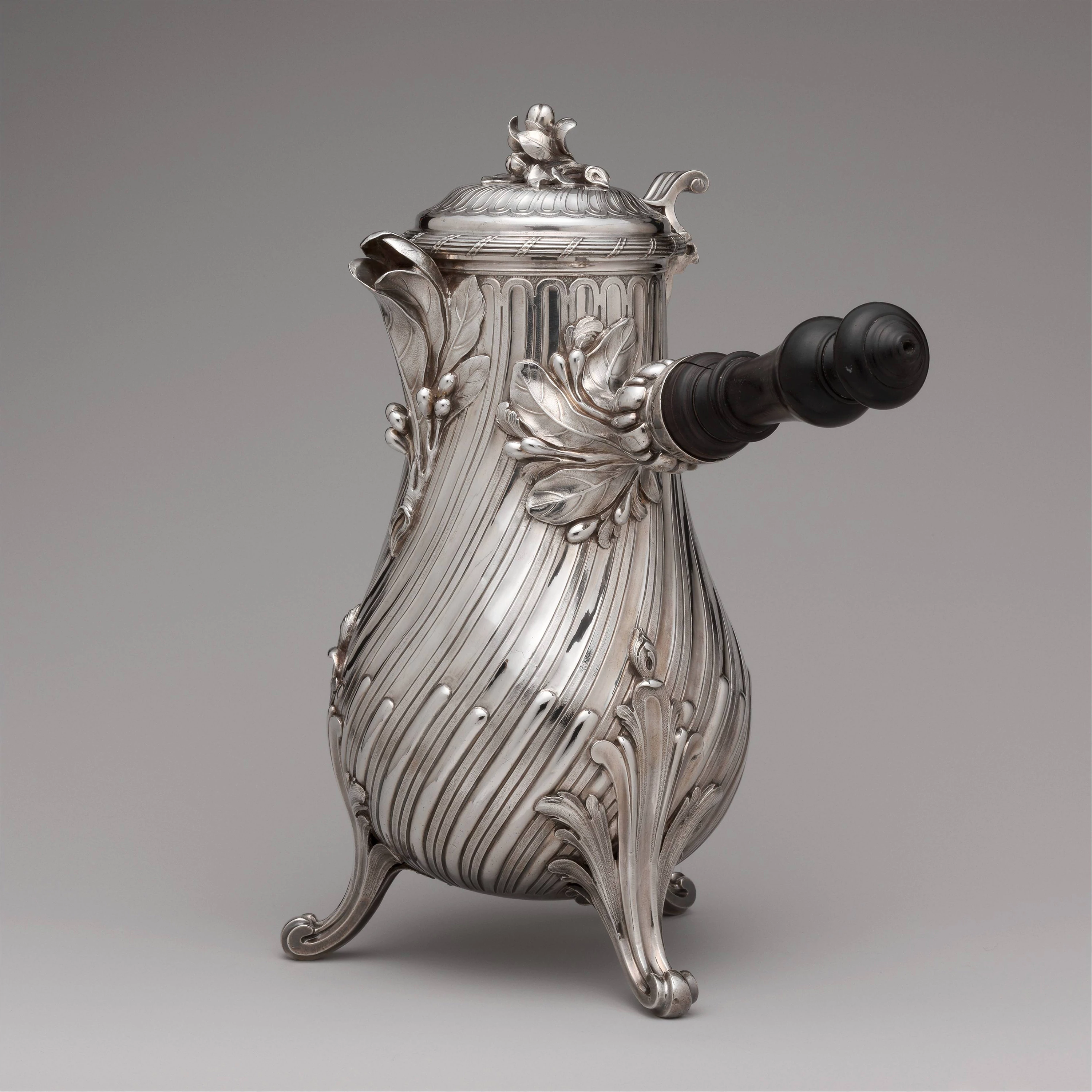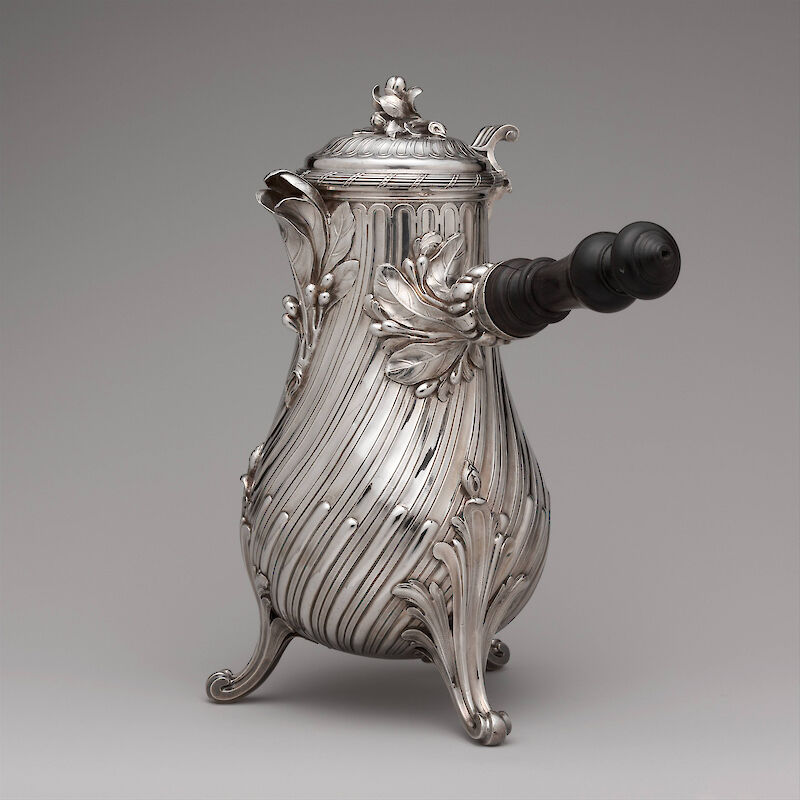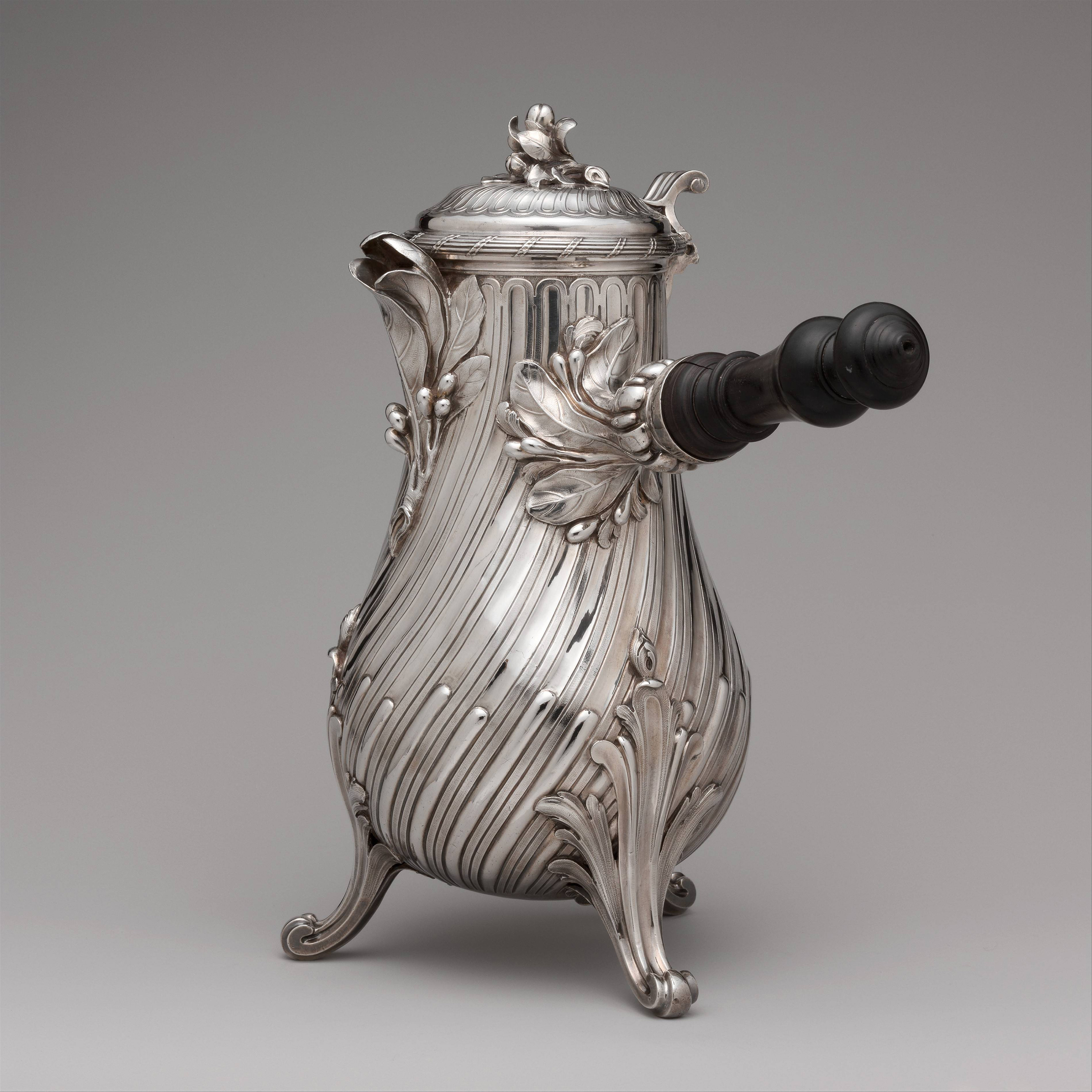


This coffee pot represents one of the most original and successful designs found in all of eighteenth-century French silver. The spiraling channels that form the body create a sense of dynamic movement, and the spout and handle base are formed of coffee leaves and berries that elegantly reflect the intended function of the pot.
It was long believed that this coffee pot was one of six made by François-Thomas Germain as part of a large silver dinner service for the Portuguese king, José I. However, the MET’s coffee pot lacks the engraved royal Portuguese coat of arms found on the coffee pots now in Lisbon, and its lid has slightly different decoration. It’s likely this coffee pot was the first made in this design and served as the model for the six made for the Portuguese court.
Germain, son of the famous silversmith Thomas Germain, was one of the most fashionable silversmiths in Paris in the second half of the eighteenth century, and his large workshop supplied important services to the French and Russian courts, in addition to that of Portugal.
